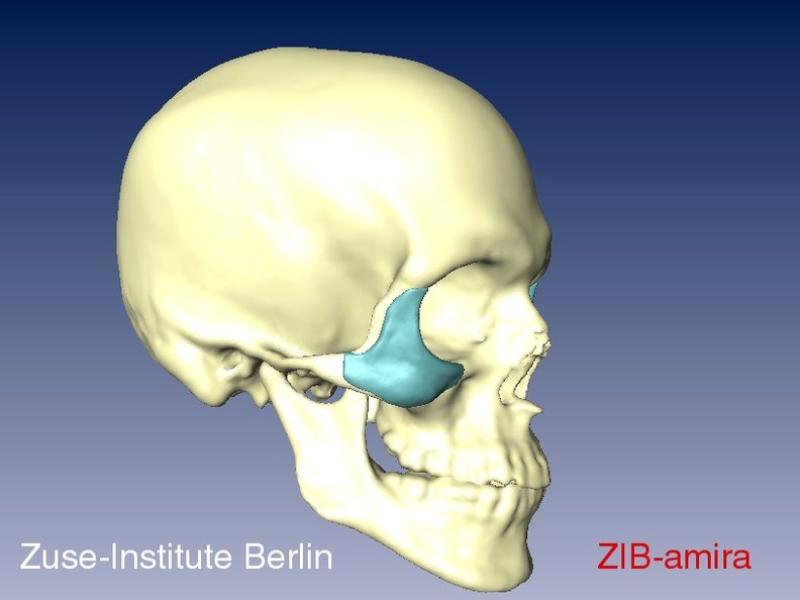Individualized therapies, in particular surgical interventions, require detailed preoperative planning. We address two such areas: bone implant design and osteotomic surgery.
Congenital malformations or trauma-related defects of facial bones are often corrected by patient-specific implants to substitute or complement bone structures. The implant's shape and position affects the soft tissue and hence the visual appearance of the patient. Thus, implant formation and placement are of utmost importance for the final outcome of rehabilitative facial surgery. The shape of an implant is typically customized individually during the operation, which is a tedious and time consuming process. A preoperative design of implants using CAD methods has the potential to shorten operation time, and is becoming more and more relevant.
Congenital or trauma-related deformations of the lower extremities can frequently be corrected by osteotomic surgery. There, a long bone is cut and reset at an angle. Such a change to the mechanical functioning of the musculoskeletal system can have detrimental long-term effects, which need to be assessed beforehand. The choice of surgical procedure today still relies largely on the experience of the surgeon. A simulation of the mechanics of the musculoskeletal system would provide valuable additional information.
